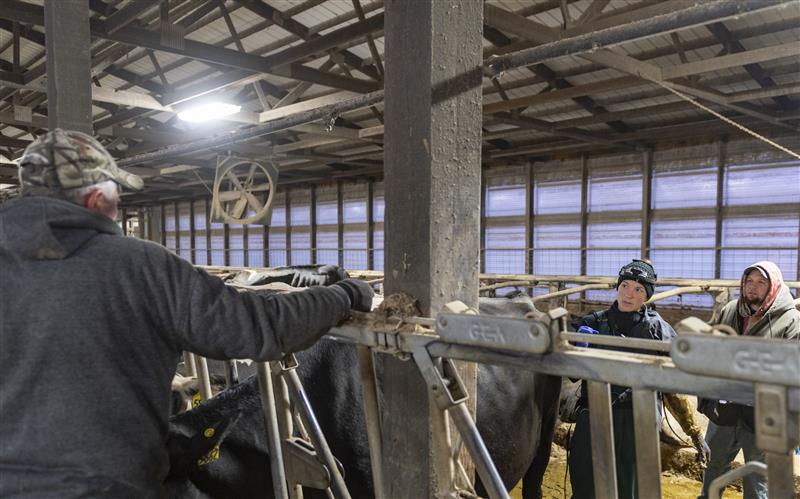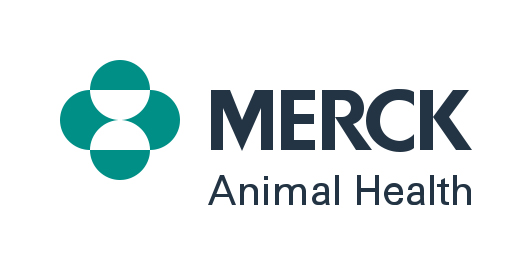THIS or THAT? With dairy repro, the answer can be both.
By Glaucio Lopes
Robots or parlors? Holsteins or Jerseys? Milk replacer or pasteurized whole milk? These are some of the choices in a dairy producer’s game of “this or that.” One set of choices you won’t find on this list —activity monitoring or synchronization. These approaches to dairy reproduction management do not require a singular choice. Both can succeed by working in concert, providing more impressive repro results than either choice alone.
The value of a pregnant cow in a dairy herd cannot be overstated. But the value of a pregnancy is also time-bound. Is a newly confirmed pregnancy more valuable at 100 days in milk versus 150? Absolutely.
Industry experts agree that reproductive success requires attention to timing. Experts suggest, among several tips, inseminating as soon as possible after the voluntary waiting period, ensuring cows are inseminated at the correct time in relation to estrus or ovulation, and aggressively re-inseminating cows that are not confirmed pregnant.1

Both synchronization protocols and monitoring technology help dairy producers manage the critical timing component of reproduction. While synchronization leverages exogenous hormones to manipulate ovulation timing, monitoring technology allows you to take advantage of naturally occurring estrous cycles.
Managing the one-third
Labor is always a limiting factor on dairies, so why not rely entirely on monitoring technology for heat detection? Simply put, some cows do not show heat in the way we’d expect. Research has confirmed that, whether using monitoring technologies or more traditional heat detection methods, you are likely to identify only about 70% of cows in heat.2
What about the other one-third of cows? One explanation is that health problems in early lactation can significantly impact reproduction. In a University of Florida study that evaluated the daily health of nearly 6,000 cows across several farms, 84% of healthy cows were cyclic in early lactation.3 But among cows that faced a disease instance in early lactation, only 80% cycled. And only 71% of cows cycled after experiencing more than one disease incident in early lactation.
Monitoring dollars well spent
However, the investment in monitoring non-cycling cows is not in vain. Monitoring technologies allow for proactive intervention of postpartum health challenges and identify cows not cycling normally. For those exhibiting the latter, the use of synchronization is a smart next step.
This data-driven approach to sorting cows for breeding protocols is often called targeted reproductive management (TRM). TRM leverages the valuable data that monitoring technology provides to intervene early or identify cows that are not likely to show typical signs of estrus. It also showcases the value of using activity monitoring and traditional synchronization protocols for an even more successful outcome than either practice alone.
Researchers at the University of Florida used activity monitoring along with synchronization protocols to understand how this approach compares to a standard Double-OvSynch program. In one group, cows that showed at least one high-intensity estrus were bred based on activity over 42 days. If an estrus was not detected, they were assigned to a Double-OvSynch protocol. Those that did not show estrus or had low estrus intensity during the post-calving period were enrolled in a Double-OvSynch protocol.
When evaluating pregnancy success, second and greater lactation cows on the TRM protocol had significantly more pregnancies at 30 days and at 65 days post-insemination. Interestingly, first lactation cows had a higher pregnancy rate when they went straight into a Double-OvSynch protocol.
The long-term success when using BOTH
For both young and older cows, the value of combining monitoring with synchronization continues throughout the lactation. In the Florida study, cows not confirmed pregnant at preg check were bred again more quickly by enrolling them in a resynch protocol and watching for activity-based heats. The table below describes the study’s results at 305 days in milk (DIM.). The table shows that regardless of their lactation group, cows enrolled on the TRM protocol for first service are less likely to be open at 305 DIM compared to cows enrolled on Double_OvSynch.
Percentage of Open Cows at 305 DIM3
- Double-OvSynch (control group): First lactation, 12%. Second and greater lactation, 16%
- Targeted Reproductive Management: First lactation, 6%. Second and greater lactation, 8%
In my role, I see producers experience similar results with TRM in real-world settings. It’s exciting to consider the opportunity to design new decision-making protocols to help producers elevate reproductive outcomes using both synchronization and monitoring.
When monitoring technology was new, we may have thought estrus synchronization would someday be obsolete in favor of technology-based heat detection. It is true that behavior monitoring has reduced many dairy producers’ reliance on synch protocols. However, research, as well as real-life scenarios, are proving that when it comes to synchronization and monitoring, it is not a “this or that” answer, it’s both.
References
- Fricke, P. University of Wisconsin – Madison. Five keys for reproductive success. https://paulfricke.webhosting.cals.wisc.edu/wp-content/uploads/sites/173/2015/02/Five-Keys-for-Reproductive-Success.pdf. Retrieved March 12, 2025.
- Valenza, A, Giordano, J O, Lopes, G, Jr, Vincenti, L, Amundson, M C, Fricke, P M. Assessment of an accelerometer system for detection of estrus and treatment with gonadotropin-releasing hormone at the time of insemination in lactating dairy cows. J. Dairy Sci. 2012. 95(12):7115-7127. https://doi.org/10.3168/jds.2012-5639.
- Gonzalez, T. D., Factor, L., Mirzaei, A., Montevecchio, A. B., Casaro, S., Merenda, V. R., Prim, J. G., Galvão, K. N., Bisinotto, R. S., Chebel, R. C. Targeted reproductive management for lactating Holstein cows: Reducing the reliance on exogenous reproductive hormones. J. Dairy Sci. 2023. 106(8):5788-5804. https://doi.org/10.3168/jds.2022-22666.
Find more content for your dairy operation.
About the author

Glaucio Lopes
Associate Director, Scientific Sales Affairs/Dairy Monitoring – Customer Success
